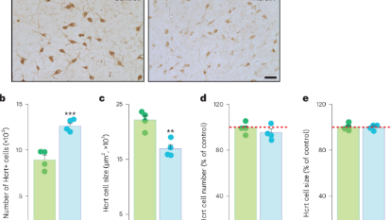“Unlocking the Secrets of Immunity: How WNK1 Pathway Holds the Key to Supercharged T Cell Migration!

In a recent publication in Nature Communications, a team of researchers elucidated the necessity of ion entry for T cell migration by investigating the regulatory role of With No Lysine (K) 1 (WNK1) kinase in ion and water influx. The study explored the impact of WNK1 on actin polymerization and cell movement.
READ: From Glowing Skin to Weight Control: Unveiling 5 Health Perks of Guava Consumption
WNK1
T cell migration is crucial for adaptive immunity, involving naive T cells navigating lymphoid organs to locate antigens. Initiated by Chemokine (C-C motif) Ligand 21 (CCL21), which activates C-C Chemokine Receptor Type 7 (CCR7), this process leads to integrin-mediated T cell adhesion and migration into lymph nodes.
During this phase, T cells scan for antigens, essential for effective immune responses. Chemokine signaling induces T cell polarization and actin network formation, vital for movement and mediated by Ras-related C3 Botulinum Toxin Substrate 1 (RAC1), RAC2, and Cell Division Control Protein 42 (CDC42) Guanosine Triphosphatases (GTPases).
WNK1 kinase, known for its role in ion regulation in kidneys, also plays a critical role in T cell migration. It controls ion influx by activating pathways involving Oxidative-Stress Responsive 1 (OXSR1), Serine/Threonine Kinase 39 (STK39), and ion transporters like Solute Carrier Family 12 Member 2 (SLC12A2). Deficiencies in WNK1-related pathways impede T cell movement.
Further research is required to fully comprehend how ion influx influences T cell migration and its integration with other cellular systems, crucial for advancing immunology knowledge and potential therapeutic interventions.
About the Study
The research investigated WNK1 kinase’s role in T cell migration using mice with a loxP-flanked Wnk1 allele (Wnk1fl) or a Wnk1 deletion (Wnk1−). These mice were crossed with those carrying a tamoxifen-inducible Cre recombinase under the ROSA26 promoter (ROSA26CreERT2 RCE). The resulting bone marrow reconstituted the hematopoietic system of irradiated RAG1-deficient mice, resulting in chimeras with either WNK1-expressing (Wnk1+/−RCE) or WNK1-deficient (Wnk1−/−RCE) T cells.
The study revealed that WNK1 expression and its substrates OXSR1 and STK39 influence T cell migration, as demonstrated in under-agarose assays. Inhibitors of WNK1 and SLC12A2 also affected migration. Ion co-transporters regulated by OXSR1 and STK39, crucial for K+, Na+, and Cl− ions, were highlighted through SLC12A2-deficient cells and inductively-coupled plasma mass spectrometry (ICP-MS) analysis.
Quantitative analysis of water movement, assessed by relative cell volumes in response to CCL21 for CD4+ T cells, demonstrated the impact of aquaporin channels like Aquaporin 3 (AQP3) on T cell movement speed and polarization, using specific inhibitors.
Live cell imaging and staining showcased the sub-cellular distribution of WNK1 pathway proteins and their activities at the leading edge of migrating T cells, providing comprehensive insights into the molecular mechanisms governing T cell migration.
Study Results
The study’s findings revealed key insights into T cell migration and the role of the WNK1 pathway. WNK1, OXSR1, and STK39 were identified as essential for CCL21-induced migration of CD4+ T cells, evidenced by slower migration speeds and atypical cell polarization in deficient cells. Inhibitors of WNK and SLC12A2 further supported these findings.
Ion movement emerged as a critical factor in T cell migration, with increased potassium ions following CCL21 stimulation, reduced upon WNK1 inhibition. Modifying sodium and chloride ion concentrations confirmed their necessity for T cell migration.
WNK pathway proteins were shown to govern water entry and cell volume regulation, with WNK-expressing T cells exhibiting increased cell volume upon CCL21 stimulation. Water entry, measured through deuterium oxide uptake, was CCL21-stimulated and WNK-dependent.
AQP3, a water channel, was established as crucial for CCL21-induced T cell migration, as its inhibition significantly decreased migration speed. Live cell imaging highlighted the polarization of WNK1 pathway proteins at the leading edge of migrating T cells, emphasizing their importance in immune cell function.
In conclusion, the study provided compelling evidence for the critical role of the WNK pathway in T cell migration, influencing cell volume, ion influx, and water entry, particularly at the leading edge of migrating T cells.




